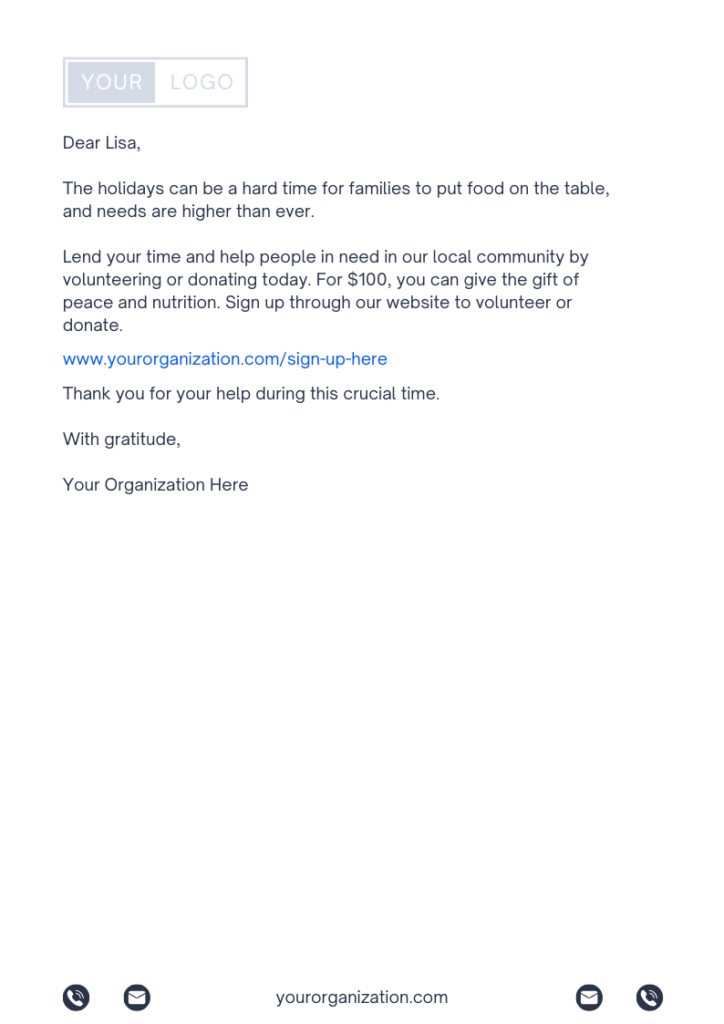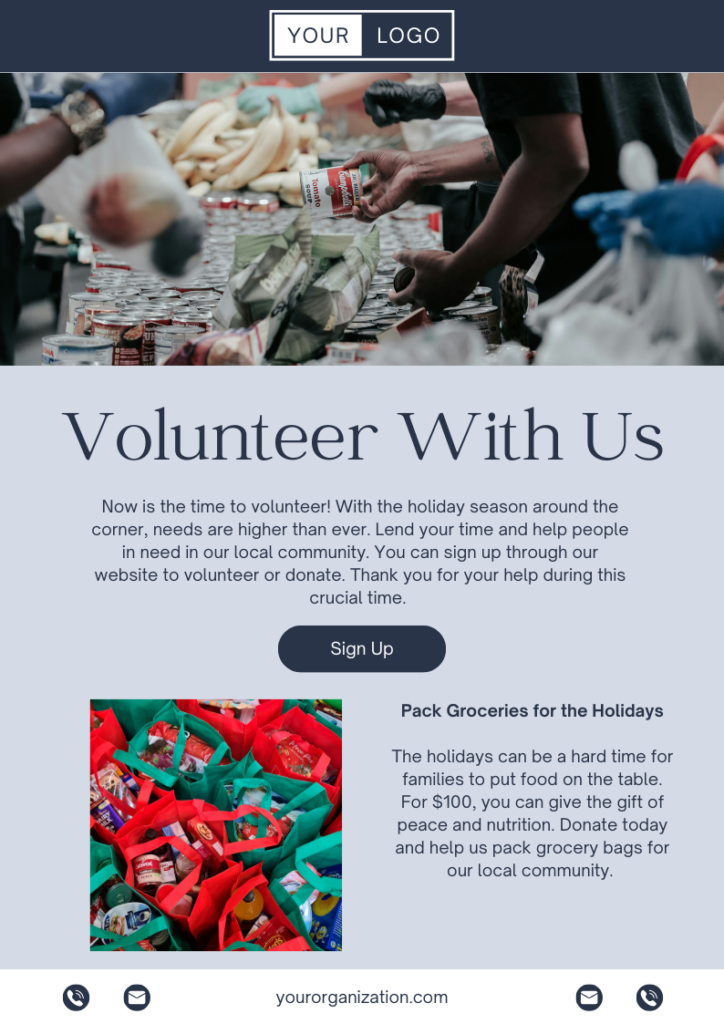December 6, 2023
6 Effective Email Strategies for Nonprofit Organizations
Nonprofit email marketing can be daunting. Most have fears of bombarding reader’s inboxes or not even knowing where to start. However, the worst thing you can do for your email marketing efforts is not doing anything at all.
About 91% of US consumers use email on a daily basis. That is a very large potential audience for nonprofits. Let’s talk about how to leverage your email marketing to ignite donor loyalty, drive donations, and master your nonprofit email marketing techniques.
Email Helps Donors Understand Why They Should Give
The first step in any email marketing strategy is to understand your organization’s value proposition. Your organization’s value proposition is not its mission statement, an incentive, or your core values. Instead, a value proposition can be identified by asking this question:
Why should I (the donor) give to you (the organization) over a different organization (often, of similar mission)?
This is where you need to put yourself in the shoes of the donor.
- Intrigue your donor: Choose language for headlines, subject lines, preview text, etc. that piques interest. “Give to [Organization Name] Today” vs. “Give the Gift of Changing a Life with Your Donation.” Connect with the reader using “you” language. Understand what they want (to make a difference).
- Set Yourself Apart: What sets you apart from similar organizations? Highlight that with strong and compelling copy. Example: “You won’t find these stories from the mission field anywhere else.”
- Prove Credibility: Now that you’ve got their attention and proved why you’re unique, you have to prove that they can trust you. A great way to do this is through testimonials, which often contain an emotional appeal. Statistics are also a great way to prove credibility—although, they can be less emotional.
The Best Nonprofit Email Marketing Strategies
Let’s get into the nitty gritty details of implementing your value proposition into strategy.
1) Prominently place a newsletter sign-up throughout your site.
It’s hard to send out an email without any recipients! For most clients, we recommend a newsletter subscriber form that permanently lives in the footer of your website. However, this is not the only option
You can place a CTA to subscribe on any page of your site, gather addresses from gated content, or even utilize a pop-up window for first-time visitors.
2) Add value through other content outlets.
In your emails, don’t be afraid to feature a video, your latest social post, or blog! Content like this can help drive click rate and engagement. In fact, including a video can increase your click-through rate by up to 65%!
Plus, this gives your reader multiple ways to interact and keep up with your organization. More touch points equal greater trust and stronger loyalty, which should be a large goal of your organization.
3) Make your emails feel more human.
Whenever you can, use name personalization in subject lines and greetings. This can be done through your email marketing platform with the use of merge tags. You want to make an email feel like it was only sent to that one receiver. Plus, there is a greater chance of an open if the reader sees their name.
Another way to make your emails feel more human is to keep the text simple. Oftentimes, there is a temptation to “level up” your wording and make it more “formal,” but it should reflect a conversation rather than a high-level memo.
Lastly, commit to a schedule but don’t oversend. Reach a balance that seems natural for your organization.
4) Understand the “design vs. not designed” tension.
This one may ruffle a few feathers—and you can do your own A/B testing to prove it right or wrong—but emails don’t have to be designed. In fact, there is growing evidence that finds minimalist emails are more effective because they feel extremely personal when compared to highly-designed marketing emails. This isn’t to say that beautiful design is a thing of the past. It’s a rethinking of personalization.


5) Prioritize your mobile experience.
In today’s technology era, 41% (HubSpot Blog Research, 2021) of emails are open via mobile devices, not computers. (As Gen Z would say, your phone eats first.) This means we have to adapt our strategies to our reader’s best interests! The days of optimizing emails for the computer aren’t completely gone, but today, you should optimize for a phone- and desktop-friendly email design.
This is important to note because of user experience. If your emails don’t display correctly on mobile or desktop, it’s highly likely to be deleted immediately.
6) Don’t hide the “donate” ask.
Lastly, make “donate” buttons or other calls to action easily and readily available to the reader. Eliminate all barriers to a reader making a donation or clicking to your site! We often suggest placing the same calls to action throughout emails multiple times.
So, Are You Ready to Send?
Depending on the scale and ability of your organization, email marketing efforts look different for each company. However, our strongest piece of advice is to send something. While having multiple touchpoints and funnels with your donors is preferred, if you are unable to do that, one email is better than none.
Better yet, have a marketing agency, like us, do it for you. With a heart for a larger mission—locally and globally—than ourselves, we understand the passion and importance of nonprofits. Let’s get connected.







